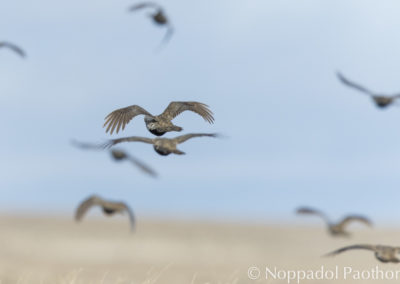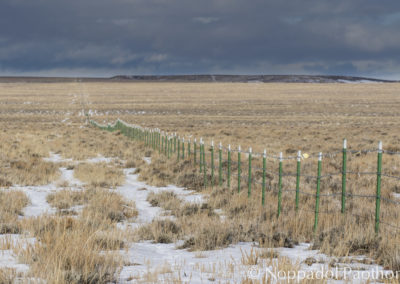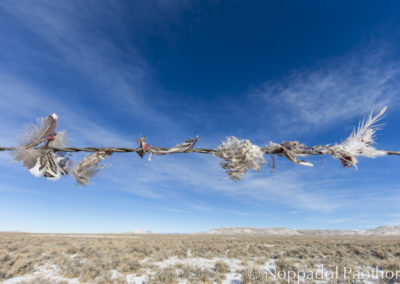This winter I went to photograph sage grouse in Wyoming and was able to witness a large gathering of sage grouse. A good friend and world-renowned falconer, Steve Chindgren, said that he has seen a large flock as many as 1,000 sage grouse congregate in that area during the winter.
Due to unseasonably warm weather with no new snow, I only encountered a smaller flock of around 300 birds feeding on sagebrush leaf, but it was quite a sight to see, so rare these days.
Sage grouse can survive and even thrive during the coldest months as long as they have access to water (snow) and food (sagebrush leaf). Sage grouse are powerful flyers that can rocket across landscape reaching 70 miles an hour in their long straight flights. They can virtually escape any predator including Golden Eagle.
However, as tough as they may be, sage grouse are no match for man-made barbwire fence that cut across the landscape in high desert area. Fence collision causes a high mortality not only to sage grouse but other wildlife such as pronghorn, elk, and mule deer that migrate through high desert area.
Although barbwire fences may be visible during daytime, in early dawn/dust hour, these birds can’t see them until it’s too late. This makes it even more deadly when some of these fences are located in a close proximity to the feeding area where hundreds or thousands of sage grouse gather.
It didn’t take me long to identify an evidence of fence collision as I traveled several miles along a fence line on a cold morning where fresh snow fell just a night before. And this fence had several highly reflective markers supposed to improve the visibility.
According to Steve who’s been in the area for over 3 decades, at the high of grouse season he encountered with as many as 60 dead birds along a fence line in one day. As Steve puts it, “hunters hunt sage grouse with limited number of grouse during a short hunting season. These fences kill them everyday with no limit.”
The simple solution would be to remove these fences all together from the area where sage grouse use especially close to the leks where these birds travel routinely in early dawn. I hope to have more in-depth discussion on this in my upcoming book on sage grouse.



